

Ten Mythological Creatures In Ancient Folklore. THE REVISED IRISH ORIGINS OF CIVILISATION : LEYLINES DRUIDS AND STONE CIRCLES. The Witch Garter is worn in various rituals for it’s magical properties and they are also used as badges of rank amongst Witch Covens.

The use of garters can be traced back to Paleolithic times – so no wonder, then, that the highest honour bestowed by the British monarchy on a person is an invitation to join the ORDER OF THE (WITCH) GARTER which has an annual parade outside St George’s Chapel at Windsor Castle in England every year. The exterior roof of the chapel is festooned with sculptures of ‘Yales’ which are unicorn-type mythological demonic creatures whose bodies are covered in circular markings. In Search of Ancient Ireland . Technology. By Carmel McCaffrey and Leo Eaton ometime in the fifth millennium B.C., new technology arrived in Ireland, carried by immigrants from Europe or native Irish who had learned new skills overseas.
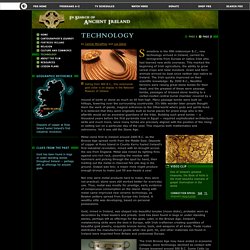
This marked the beginning of Irish agriculture, the ability to grow cereal crops and raise livestock. Grain and farm animals arrived by boat since neither was native to Ireland. IRISH LITERATURE, MYTHOLOGY, FOLKLORE, AND DRAMA. Irish Writers OnlineIrish PlayographyStudy Ireland: Poetry - BBCIrish Women Writers - M.
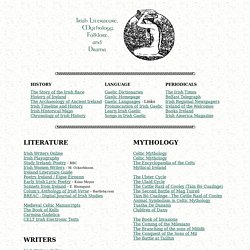
OckerbloomIreland Literature GuidePoetry Ireland / Éigse ÉireannEarly Irish Lyric Poetry - Kuno MeyerSonnets from Ireland - E. BlomquistColum's Anthology of Irish Verse - Bartleby.comBREAC - Digital Journal of Irish Studies. Ireland. Sacred Texts: Legends and Sagas. Sacred-texts home Neo-Paganism Classical Mythology Lord of the RingsBuy CD-ROM Buy Books: Legends and Sagas General Northern European Arabia Baltic Basque Celtic Eastern European England Finland France Germany Greece Iceland Italy Persia Portugal Roma (Gypsy) Scandinavia Spain This section of sacred-texts archives the rich literature of Sagas and Legends.
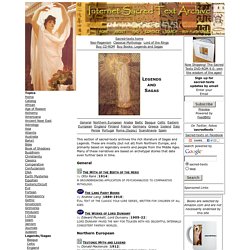
These are mostly (but not all) from Northern Europe, and primarily based on legendary events and people from the Middle Ages. Fables & Tales - Paper Portitude. IRISH LITERATURE, MYTHOLOGY, FOLKLORE, AND DRAMA. The Irish Tuatha Dé Dannan Connection to the Tribe of Dan. "It is certainly no coincidence that the Irish Gaelic word Dun or Dunn means "Judge," just as Dan does in Hebrew!
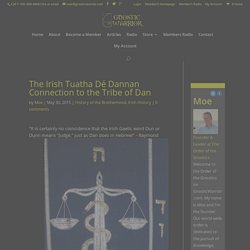
" - Raymond McNair The ancient connections between the Irish Tuatha Dé Dannan and the Greek Tribe of Dan have been documented all throughout history. The "History of Ireland," in the Peabody Institute, states that the residents, prior to the Tuatha De Dananns, were descendants of 5,000 people from Greece called Foibalges. The next to appear, about 717 B.C., under a king called Nuad, were the "Tuatha De Danann," said in Irish to be "the tribe of Dan. Stories for children, folktales, fairy tales and fables. Scottish Myths and Legends. Leabhair / Books from Cló Mhaigh Eo, Claremorris, County Mayo, Ireland. Irish mythology. Bunworth Banshee The mythology of pre-Christian Ireland did not entirely survive the conversion to Christianity.
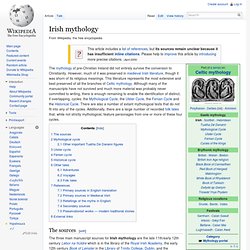
However, much of it was preserved in medieval Irish literature, though it was shorn of its religious meanings. This literature represents the most extensive and best preserved of all the branches of Celtic mythology. Although many of the manuscripts have not survived and much more material was probably never committed to writing, there is enough remaining to enable the identification of distinct, if overlapping, cycles: the Mythological Cycle, the Ulster Cycle, the Fenian Cycle and the Historical Cycle.
There are also a number of extant mythological texts that do not fit into any of the cycles. Celtic Otherworld. In Celtic mythology, the Otherworld is the realm of the living and the home of the deities and other powerful spirits.

Tales and folklore refer to the Otherworld as "The Fortunate Isles" in the western sea, or at other times underground (such as in the Sídhe) or right alongside the world of the living, but invisible to most humans. The intrusion of the Otherworld into this one is signaled by the appearance of divine beings or unusual animals, or other phenomena such as sudden changes in the weather.[1] Sometimes an otherworldly woman will present an apple or an apple branch, or a ball of thread to follow as it unwinds.[1][2] Beliefs of the ancient Gauls[edit] In Lucan's account of the druidical doctrine of metempsychosis, the Otherworld is referred to as Orbis alius.[3] Inuit Myth and Legend. Inuit mythology is a repository of Inuit culture, passed down by elders through generations to enrich and enlighten.

My Mother's Story By Solomon Karpik, 1987 (courtesy DINA/PAN 83PR87 29). Inuit mythology is a repository of Inuit culture, passed down by elders through generations to enrich and enlighten. Traditionally used in all aspects of daily life, Inuit mythology has undergone a resurgence in popularity as community groups aim to preserve traditional teachings as a method of cultural and political solidarity.
Mythology and Legend. Celtic deities. The gods and goddesses of the pre-Christian Celtic peoples are known from a variety of sources, including written Celtic mythology, ancient places of worship, statues, engravings, cult objects and place or personal names.
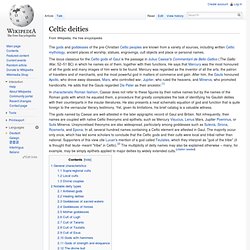
In characteristic Roman fashion, Caesar does not refer to these figures by their native names but by the names of the Roman gods with which he equated them, a procedure that greatly complicates the task of identifying his Gaulish deities with their counterparts in the insular literatures. He also presents a neat schematic equation of god and function that is quite foreign to the vernacular literary testimony. Boudicca, the Celtic Queen that unleashed fury on the Romans. We British are used to women commanders in war; I am descended from mighty men!
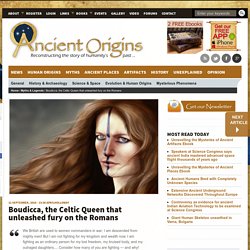
But I am not fighting for my kingdom and wealth now. I am fighting as an ordinary person for my lost freedom, my bruised body, and my outraged daughters.... Consider how many of you are fighting — and why! Then you will win this battle, or perish. The Irish Story and Legend of Cu Chulainn. Cu Chulainn is one of the most famous Irish mythological heroes.
He appears in the stories of the Ulster Cycle, and Scottish and Manx folklore. He was said to be the son of Deichtine and the god Lugh, and the nephew of Conchobar mac Nessa, the King of Ulster. The Celtic Goddess Epona that Rode Swiftly Across the Ancient Roman Empire. The protector of horses, mules, and cavalry, Epona was one of the only non-Roman goddesses to have been wholly adopted by the Roman Empire. Often depicted astride a horse, Epona resonated in the forces of the Roman cavalry as an inspiration and guide through even the darkest of battles, and she remained one of their most worshipped goddesses between the first and third centuries CE. Interestingly, Epona was also seen as a goddess of fertility, accompanied in many of her depictions by grain or a cornucopia. Coupled with the worship of her equine prowess in the military, it is evident she was seen both in Gaulish and Roman cultures as a deity of prosperity within the equestrian home and on the battlefield.
Originally from Gaul, Epona was worshipped in Britain throughout the Iron Age, coming to the continent during the time of the Romans. Epona made her way to Rome through the aid of the Roman military. Tierracast added: Michael Tsarion - The Irish Origins of Civilization. The Druid and Phoenician Coarbs of Ireland. "These Corybantes are the Irish Curbs or Coarbs. It is not surprising that they came from Phoenicia. " - Sir Godfrey Higgins The ancient Druids in Ireland and Culdee priests of Iona had called their priests by the name of the Coarbs. They were from the same stock of priests who both wore a white dress, and followed the God Io (Jehovah or Yahweh). Their teachings, customs, religion and property descended from father to son. The Scottish Rite of the Irish Children of the Nephilim.
It was in the lands of Western Europe where the mighty Nephilim would continue their sagas of kings, conquest, religion and legends. The true origins of the Scottish Rite of the Irish Children of the Nephilim would begin early in the fourth and fifth centuries. These epic stories of the Sons of God in Western Europe would carry on into the modern world; such as in Britain, France, Italy, Spain, Germany, Russia, America and many other countries where we can all witness their influence to this very day. This is their true apocalyptic story like it has never been told before. The legend of this race we are told in scriptures, that these, with all the others, in the thousand one hundred and seventieth year of the world, took to themselves wives, and they continued in their madness with them unto the flood. Part I. Irish Druids: Irish Bards. Sacred Texts Wicca & Neo-Paganism Index Previous Next The BARDS proper occupied a high position in Ireland.
The Ollamhs had colleges at Clogher, Armagh, Lismore, and Tamar. On this, Walker's Historical Memoirs, 1786, observes that "all the eminent schools, delectably situated, which were established by the Christian clergy in the fifth century, were erected on the ruins of those colleges. " They studied for twelve years to gain the barred cap and title of Ollamh or teacher. They were Ollamhain Re-dan, or Filidhe, poets. Celtic mythology. Tuatha Dé Danann. Celtic Folklore. European Stories and Fairy Tales - Fairytales of the World.